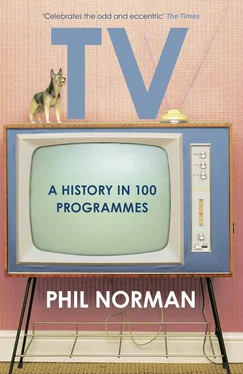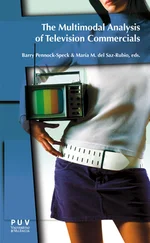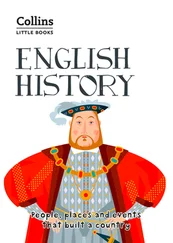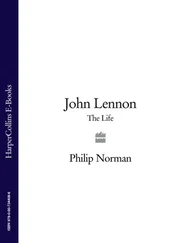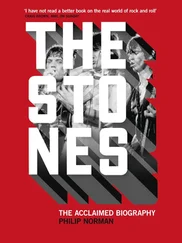The rough, natural dialogue with its repetitive, drowsy poetry was a revelation. The final scene, in which Marty finally plucks up courage to spurn his deadbeat pals, phone Clara and ask her out, was partly improvised by Steiger when the real dialogue slipped out of his head on the night. It fitted in seamlessly. His performance impressed director Elia Kazan enough to land him a part on On the Waterfront , and a star was born. Cinema may have had TV looking over its shoulder, but ‘ movie star ’ remained the top job.
‘The basic limitation of television is time,’ thought Chayefsky. ‘Television cannot take a thick, fully woven fabric of drama. It can only handle simple lines of movement and consequently smaller amounts of crisis.’28 That said, Marty packed a great deal into well under an hour. Its wonderfully minimal effects included an exterior shot of the ballroom made from cardboard and light bulbs. When Marty followed the distraught Clara out onto the ballroom fire escape and asked her to dance, the tender moment was undercut by some incidental laughter from elsewhere in the building. Marty was a basic affair, but basic didn’t mean simple.
Two years later Marty became the first TV drama to be remade for the big screen. With Ernest Borgnine in the lead, real Bronx locations and an expansion of the ‘cantankerous aunt’ subplot, it was a mighty success and took several Oscars, including Best Picture and Screenplay. Chayefsky had achieved that rarest of fames: the TV writer as household name. In a Nat Hiken comedy sketch, Phil Silvers played one half of a pretentious theatregoing couple who mistake the apartment of a dysfunctional, blue collar family for an off-off-Broadway venue. As they settle on the sofa, the nonplussed residents start squabbling at top volume. Silvers knowingly remarks to his wife, ‘obviously by Paddy Chayefsky’.
The TV networks moved their centres of production across country to Hollywood, and Chayefsky fell out of love with the medium he’d championed. The easy, trusting commissions he’d had in the early years gave way to the business-driven pseudo-science of corporation men, with whose ideas the writer was expected to compromise willingly. Many of Chayefsky’s pitches got no further than the pilot stage, including a 1965 sitcom version of Marty starring Tom Bosley.
Another grounded project was The Man Who Beat Ed Sullivan , about a hick Ohio entertainer whose marathon variety show becomes a national sensation. (Chayefsky didn’t help his case by insisting that the variety show within the play should actually be a full-on, three-hour spectacular in itself.) It wasn’t until 1974 that Chayefsky arranged his televisual disaffection into a film script about a suicidal newsreader, a power-crazed producer and a corporate conspiracy: his valedictory masterpiece, the cellar-dark satire Network . It was a damning testimony against the medium’s worst excesses by one of its pre-eminent craftsmen; television’s finest humane miniaturist denouncing its increasingly inhuman gigantism. Promoting the film, Chayefsky had three sad words for his alma mater : ‘Television? Forget it. ’ 29
SMALL TIME (1955–66)
ITV (Associated-Rediffusion)
Giants of children’s television assemble.
CHILDREN HAVE ENJOYED A special relationship with television since the very first transmissions. The BBC gave them their own playground in the schedules with Watch with Mother , in 1950, where they could enjoy the company of clattering puppet mules, unintelligible folk assembled from garden implements and the very biggest spotty dog you ever did see – all chaperoned by jolly matriarchs dispensing orotund vowels through shatterproof smiles. With its sailor suits and spinning tops and crumpets on the trolley, it was childhood as the Edwardians would have recognised it: the childhood, more or less, of the programme makers, handed down like a careworn teddy bear. When ITV arrived a few years later, its TV crèche was decorated in unmistakeably bolder, more modern style.
Beginning as a fifteen minute segment in Associated-Rediffusion’s weekday Morning Magazine line-up, Small Time soon gravitated towards its natural teatime home, and grew into a proving ground for a vast swathe of children’s TV talent. Many of the segments – Booty Mole, Snoozy the Sea Lion, Gorki the Straw Goat to name a few – would live on only in a few very keen baby-boomer memories. A few, though, added up to as great a legacy as one TV slot could hope to spawn.
The Adventures of Twizzle starred a Pinocchio-esque boy puppet who could extend his limbs at will. The stories, from the pen of Roberta Leigh, were brought to life by puppeteer Joy Laurey, but of more historic note was the show’s producer, future ‘Supermarionation’ chief Gerry Anderson. Another artificial lad, Torchy the Battery Boy , arrived a few years later courtesy of the same team. The results could only be described as ‘sub-marionation’: strings were thick as mooring cables, movements spasmodic. But this was the style, or lack of style, of the times. ‘Production values’ existed neither as jargon, nor as values. The job was done with the means to hand: nothing more and nothing less.
Puppets of the glove variety formed the second line of teatime attack. These were several degrees sprightlier, and occasionally wittier, than their dangling cohorts. Pussycat Willum, a doe-eyed kitten, became Small Time ’s eager, if slightly mawkish, figurehead. But the strand’s undoubted star turns were Ollie Beak and Fred Barker. This portly owl and calcified dish mop of a cockney dog were the creations of Peter Firmin, operated by Wally Whyton and Ivan Owen respectively. Their main human foil was Muriel Young, announcer on Rediffusion’s opening night and a primly tolerant foil for the duo’s impromptu shenanigans. More raucous yet were The Three Scampis : Bert Scampi (operator Howard Williams) and his animal pals, hedgehog Spike McPike (Wally Whyton) and aristocratic fox Basil Brush (Ivan Owen). Again, Firmin was the man behind the sewing machine.
Firmin had been introduced to television by Rediffusion’s young stage manager and part-time prop maker, Oliver Postgate. In 1958 Postgate, tiring of organising other people’s programmes, created one of his own. Alexander the Mouse was a whimsical tale of a rodent with royal aspirations, set behind the skirting board of an old house, the first of what would be a long line of wistfully remote Postgate worlds. Firmin painted the characters and sets, which were stuck to metal strips and ‘animated’ live on air by dragging magnets about under the table. This attempt to undercut even the ultra-cheap Crusader Rabbit production technique had the catch that, according to Postgate, ‘hardly a programme went out without … a hand coming into shot or a mouse coming adrift.’30
Postgate’s next attempt, the Willow Patterned Journey of Master Ho , took a more conventional approach to movement. Cut-out figures were manipulated in stop motion in a makeshift studio in Postgate’s North Finchley back bedroom, shot and edited on a 16mm film rig made of Meccano and string for £175 per ten minute episode. In 1959 he reunited with Firmin to create their first classic story. Ivor the Engine was a gloriously melancholy tale of the sole locomotive of the idyllic Merioneth and Llantisilly Rail Traction Company Limited. Firmin’s watercolour evocations of the Welsh mountains were exquisite, but the tone Postgate’s narration took, hitting a plaintive, nostalgic note halfway between John Betjeman and Dylan Thomas, was the greatest innovation. Moving away from the stiff-backed, once-upon-a-time scene-setting of previous children’s programmes, Postgate injected poetry and personality, trusting small children to engage with something more than a bland narrative of mild peril that ended in time for supper.
Читать дальше
